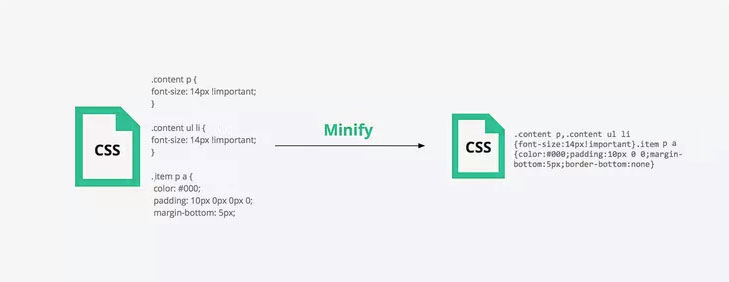Front End Optimization - Useful Tips to Improve Web Performance
In today’s digital world, there are millions of websites
accessed every day for a variety of reasons. Unfortunately, many of these
websites are clunky and bothersome to use. Poorly optimized websites are
plagued with a variety of issues including slow loading times, being non-mobile
ready, browser incompatibilities, and so on.
Site visitors simply are not going to wait very long for your website to download. Web performance and download speeds are a growing science and research shows that milliseconds can make a real difference in customer behavior and get those sales conversions.
Site visitors simply are not going to wait very long for your website to download. Web performance and download speeds are a growing science and research shows that milliseconds can make a real difference in customer behavior and get those sales conversions.
1. Clean up HTML document
HTML or Hyper Text Markup Language is the backbone of almost every website. HTML allows you to format web pages with headings, subheadings, lists and other useful word sorting features. You can also create attractive graphics with the latest HTML5 version. HTML can be easily read by web crawlers, so search engines can update your website content in a timely manner. When working with HTML, you should try to write in a way that is both concise and effective. In addition, when referring to sources other than HTML document, there will be some practical knowledge that you should follow.
2. Minify CSS and JavaScript
Minification techniques can help you eliminate unnecessary characters within a file. When you are writing code in an editor, you likely use indentations and notes. These methods certainly keep your code clean and readable, but they also add extra bytes to your document.
For example, this is a code snippet before minification is applied.
.content p {
font-size: 14px !important;
}
.content ul li {
font-size: 14px !important;
}
.item p a {
color: #000;
padding: 10px 0px 0px 0;
margin-bottom: 5px;
border-bottom: none;
}.content p,.content ul li{font-size:14px!important}.item p a{color:#000;padding:10px 0 0;margin-bottom:5px;border-bottom:none}You can easily trim the bytes in your CSS, JS, and HTML files by using a minification tool.
3. Optimize images
For those unfamiliar with front end optimization, images can be killer websites, large photo albums and high-resolution images can be annoying for the rendering process. High-definition images that have not been optimized can weigh up to several megabytes. Therefore, optimizing these files will allow you to improve the front end performance of your website. Each image contains dozens of information that are not really related to the image. With JPEG images, the image file contains both dates, locations, specifications and some other irrelevant information. You can sort the length of the file loading process by deleting unnecessary image information with the optimizing tools like Optimus. Optimus uses smart compression features using compressed PNG images.
On the other hand, Optimus uses lightweight compression features for
JPEG files. Although compression preserves the removal of additional
information of the image, Optimus is installed to compress at the level that
the user will not see the image degraded. This allows users to save large
amounts of space while maintaining high image quality.
Use vector image vs
raster/bitmap:
Prefer using vector image rather than bitmap images (when possible).
Why?
Vector images (SVG) tend to be smaller than images and SVG’s are
responsive and scale perfectly. These images can be animated and modified by
CSS.
Images dimensions:
Images dimensions:
Set
width and height attributes on <img> if the final rendered image size is known.
Why?
If
height and width are set, the space required for the image is reserved when the
page is loaded. However, without these attributes, the browser does not know
the size of the image, and cannot reserve the appropriate space to it. The
effect will be that the page layout will change during loading (while the
images load).
Lazy loading:
Images
are lazyloaded (A noscript fallback is always provided).
Why?
Why?
It will improve the response time of the current page and then avoid loading
unnecessary images that the user may not need.
4. Reduce the number of HTTP requests
What is a HTTP request?
HTTP is a request/response protocol used by a web browser to fetch files from web server.
Read more on using GET or POST methods here.
Performance tools:
List of the tools you can use to test or monitor your website or application:
5. Cache as much as possible
You’ve probably heard this term before. So, what is Web Caching?
Caching is a mechanism for a temporary storage of web pages in order to reduce bandwidth and improve performance. When a visitor arrives at your site the cached version will be served up unless it has changed since the last cache. This saves server time and makes things altogether faster. Make sure this feature is enabled on your website!
Front End Optimization - In Summary
Front-end optimization (FEO) is the process of optimizing the delivery of website resources from the client side. You can greatly improve the loading speed of your website by applying the principles of this guide. Remember, the faster your website loads, the better user experience your visitors will have.
Let us know in the comments section below if you have any other great front end optimization tips.




Thank you so much for this nice information. Hope so many people will get aware of this and useful as well. And please keep update like this.
ReplyDeleteText Analytics Software
Data Scraping Tools
Thank you :)
Delete